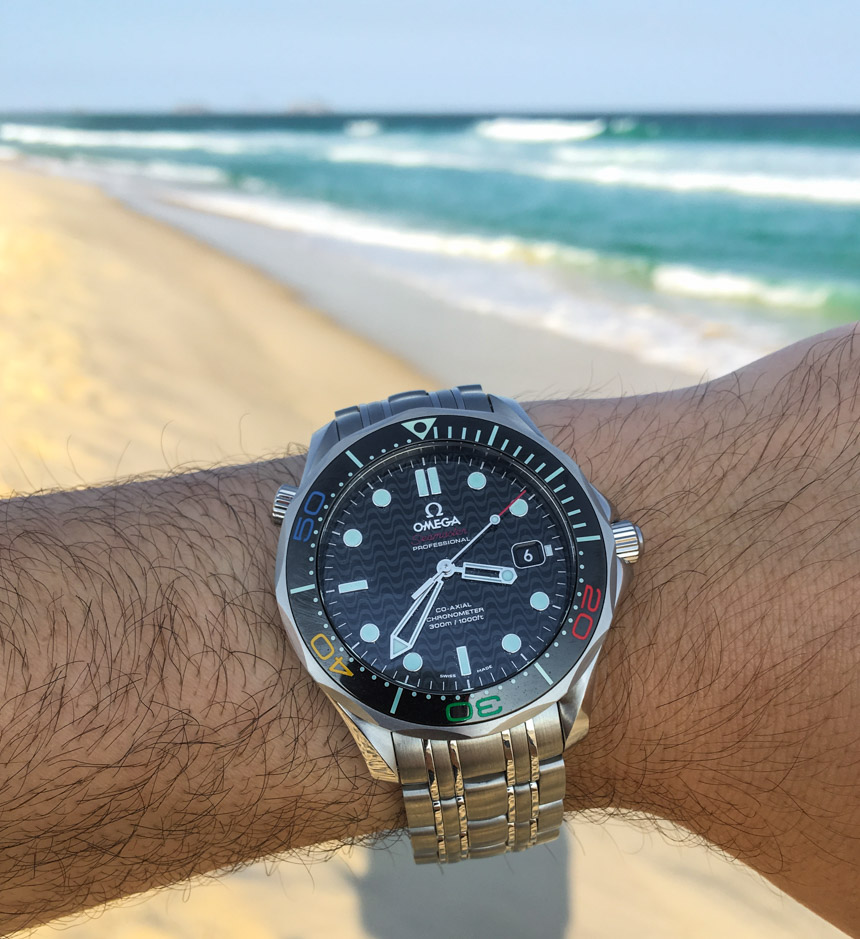
A few years ago, I visited my first Olympics event in Sochi, Russia, with Omega to appreciate the importance of the global event in terms of bringing people together as well as the impactful role that Omega plays as the official timekeeper – a role they have held since 1932 when the first modern Olympics was held in Los Angeles. Seeing the opening ceremony and some of the Olympic competition events in Rio de Janeiro and experiencing the impressive nature of the deeply emotional event, I continue to be enthused by Omega’s participation. The games, after all, are among the last forms of healthy competition between the world’s nations, and while it is designed to have both winners and losers, no one who takes part in it loses in the opportunity to bridge perceptual gaps and find cultural commonalities.
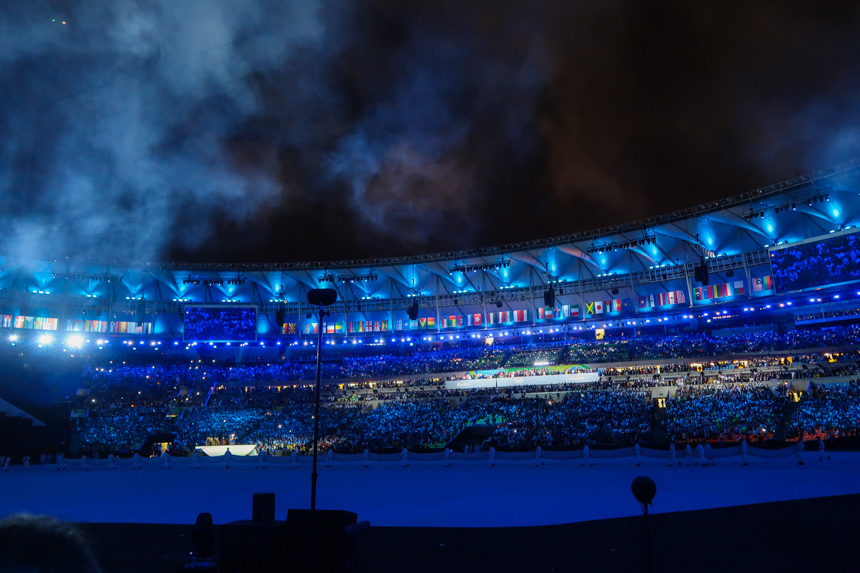
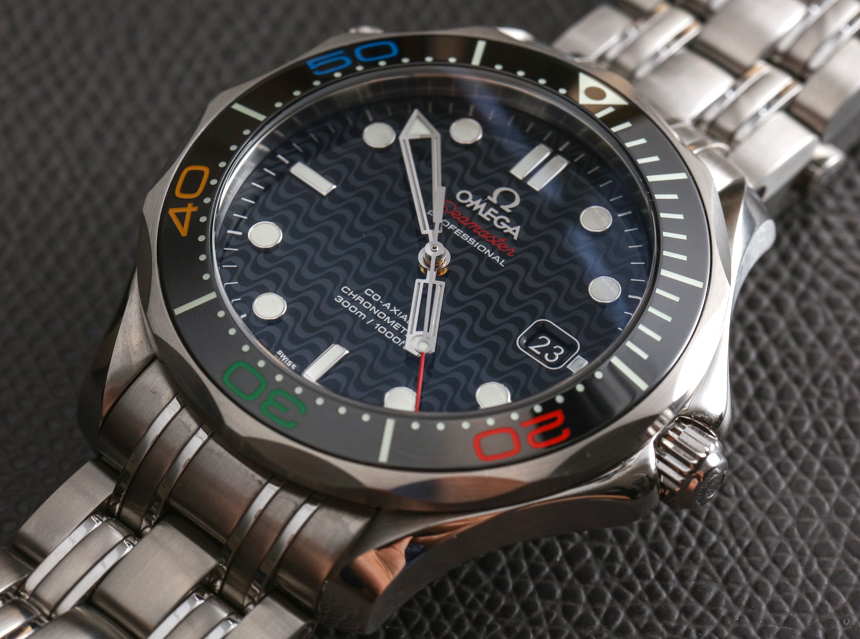
One of the things about the Olympics that I did not realize prior to Rio was how, in addition to the Olympics logos, the only other logo you’ll really see when the events are televised (and spectated in person) is the Omega logo. Given that millions upon millions of people view the Olympics each time it is held, the fact that the Omega logo is presented as part of many things related to timing and measuring must be hugely positive for the Swiss watch brand. So much so that I can only imagine the intense pressure from other major partners and sponsors of the Olympics also wanting their names to be displayed in a manner even modestly similar to that enjoyed by Omega.
With that said, Omega has a variety of goals in their ongoing work with the Olympics that are in addition to ensuring timing is both fair and accurate. These goals include connecting with consumers and athletes alike. People sometimes forget that athletes and people known for performance are an incredibly important part of the appeal of many sports watches. Athletes are watch consumers too, and Omega actually awards each of the US athletes who qualifies to compete in the Olympics their entry-level 38.5mm Seamaster Aqua Terra quartz watch that retails under $3,000. Omega is giving them a taste of a brand that they will hopefully become fans of for the long term, and rewards their participation in the events with a timepiece to start their journey of timepiece appreciation.

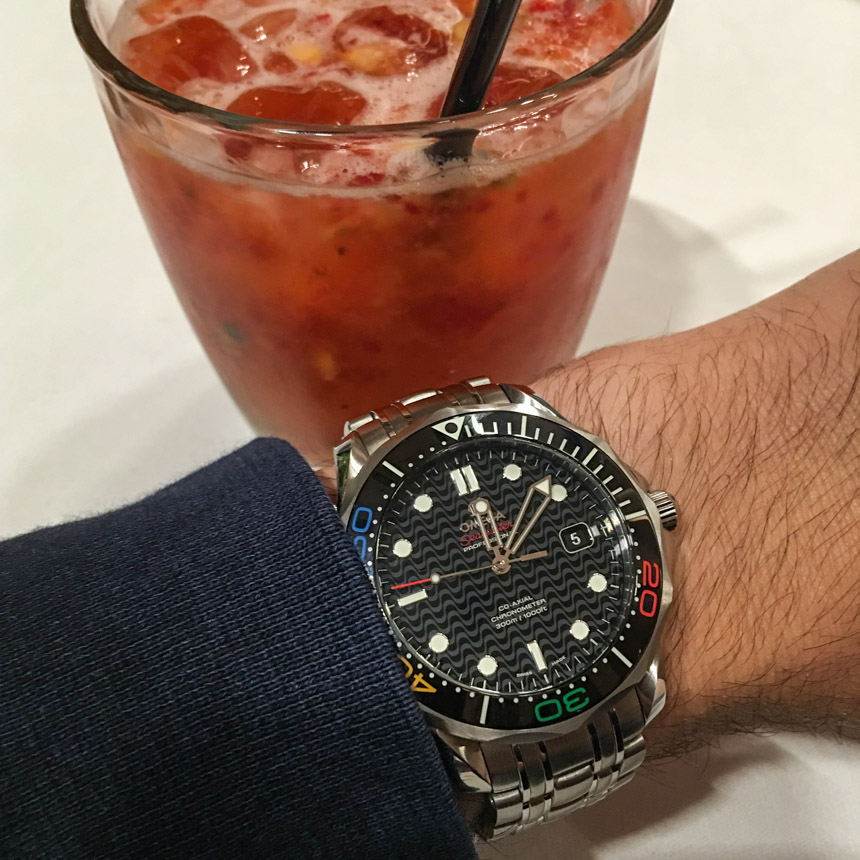
How Omega celebrates the Olympics isn’t always viewable on television or in the media. Being at these events with them grants some special privileges that only luxury companies seem to get away with. In Rio de Janeiro, it was a private cocktail hour and dinner at the top of the city in Corcovado. Most people know this as the location of the famed “Christ the Redeemer” statue which overlooks the city and is one of the most recognizable man-made objects on the planet. The Swiss can be very slick when they want something, and thanks to Omega, myself and other guests of the brand can now say that we haven’t just seen this man-made wonder of the world, but we also drank champagne and ate there while laughing and checking out each others’ watches. That was a good night indeed.
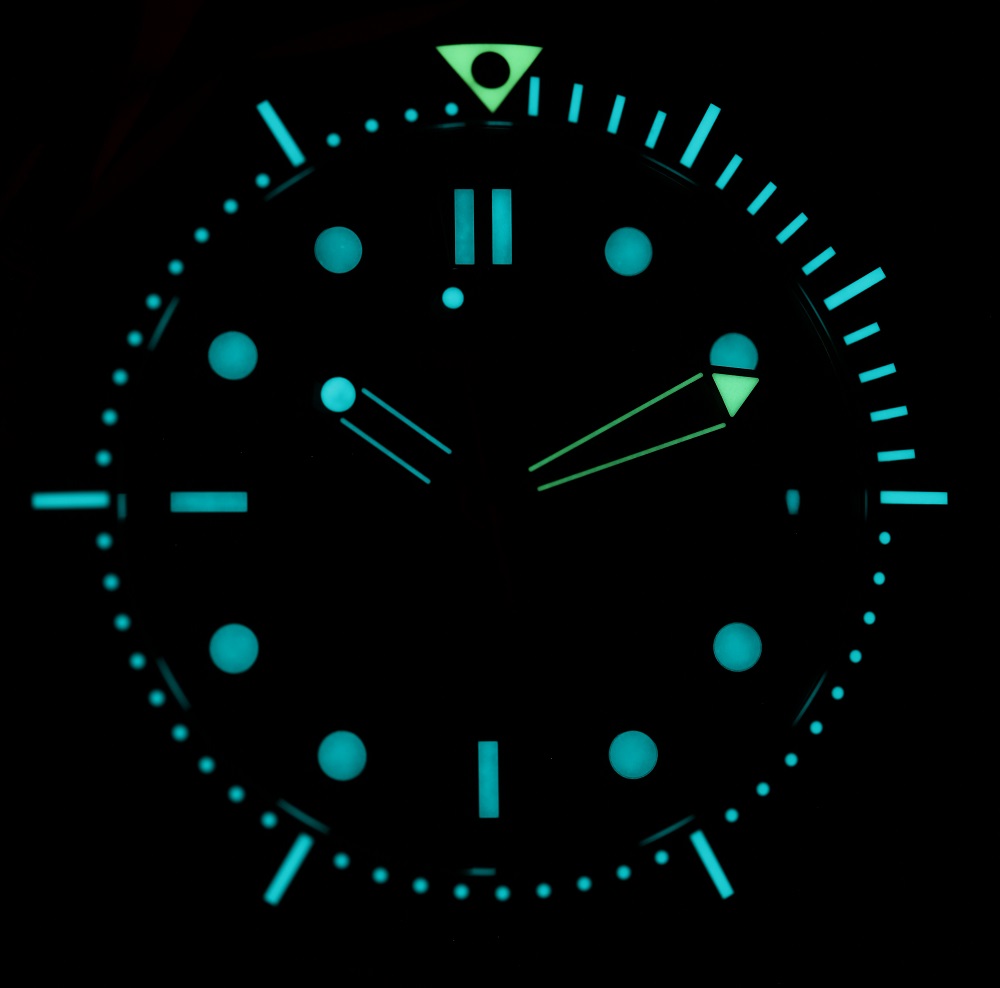
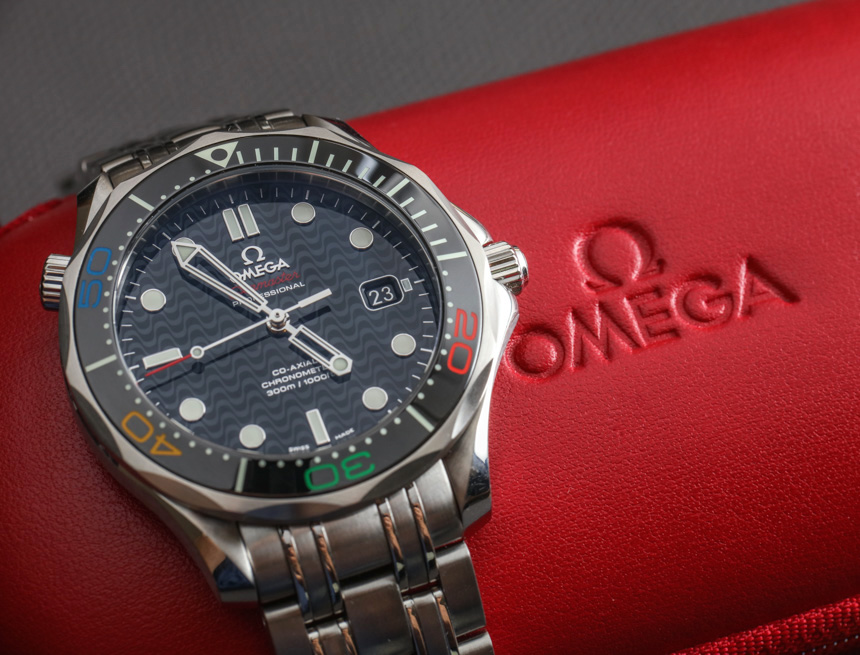
To frame the Rio 2016 Olympic games, I want to focus on my favorite limited edition (among several) for this year’s Olympics, which is the Omega Seamaster Diver 300M Rio 2016 Limited Edition reference 522.30.41.20.01.001 watch. Until now, I’d never actually worn an Omega Seamaster 300M timepiece – even though it remains one of Omega’s most popular watches. Originally released in 1993, the modern-day Omega Seamaster Diver 300M has since undergone changes and was most well-known for being an iconic James Bond watch (among many). Pierce Brosnan famously wore one when playing 007 in the film Goldeneye. Omega also readily admits that, despite not actually marketing the Omega Seamaster Diver 300M, it remains a very important product for the brand. In wearing the watch, I think I’ve figured out part of why that is.
Since 1993, the Omega Seamaster Diver 300M has changed a lot, but so has Omega’s larger collection of diving watches. It now exists as their more utility-oriented diver next to other equally functional but more “lifestyle”-themed models such as the Seamaster Planet Ocean and the Seamaster 300. Yes, there is some name confusion because there is one watch called the Seamaster 300M and one called the Seamaster 300.
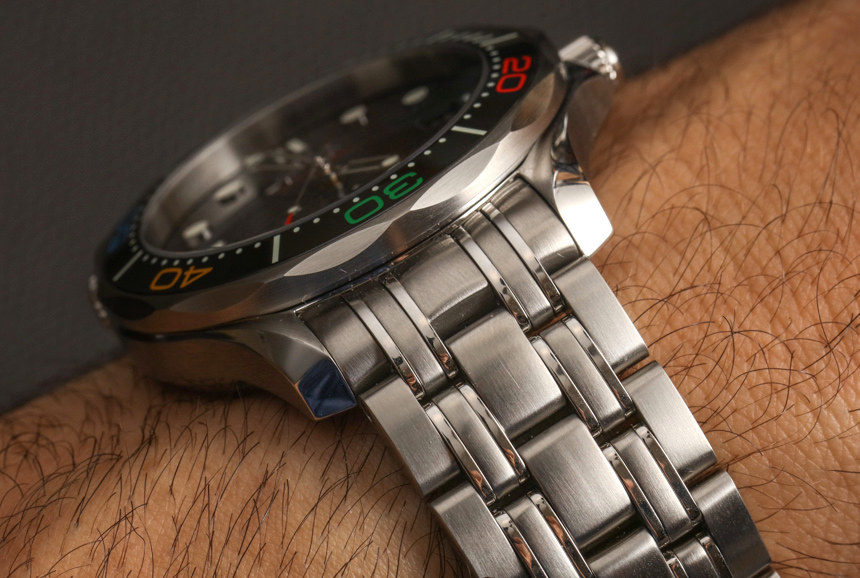
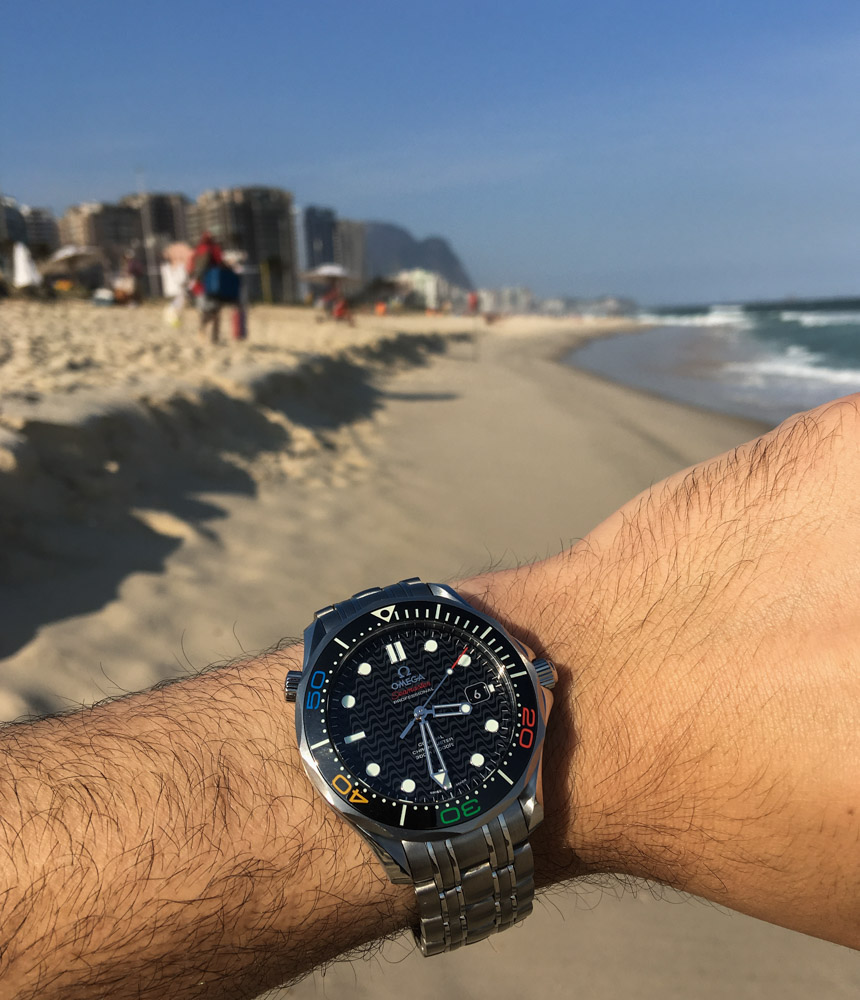
At 41mm wide and 13.07mm thick in steel, the Omega Seamaster Diver 300M is extremely comfortable. It is also very distinctive. While it would probably be wrong to suggest that no one has emulated the Omega Seamaster Diver 300M, the watch has not been copied (either in full or in part) like the Rolex Submariner has, for instance. As a watch collection, this timepiece is very clearly an Omega and nothing else.
I mentioned the Rolex Submariner for a reason, and that is because the Omega Seamaster Diver 300M is really Omega’s primary competitor to “the luxury dive watch to beat.” The Omega Seamaster Diver 300M is modest in proportions and has a pleasant, medium size on the wrist. It is a touch larger than the Submariner and thinner than pretty much all the other Omega dive watches. Omega does produce a 39mm-wide version of the Seamaster Planet Ocean, but those are easily thicker than the relatively svelte lines of the Omega Seamaster Diver 300M which does have a relatively thin profile on the wrist compared to most of the brand’s other sport watches.
